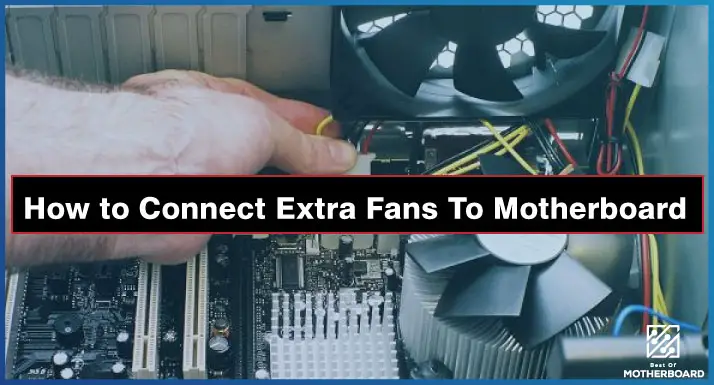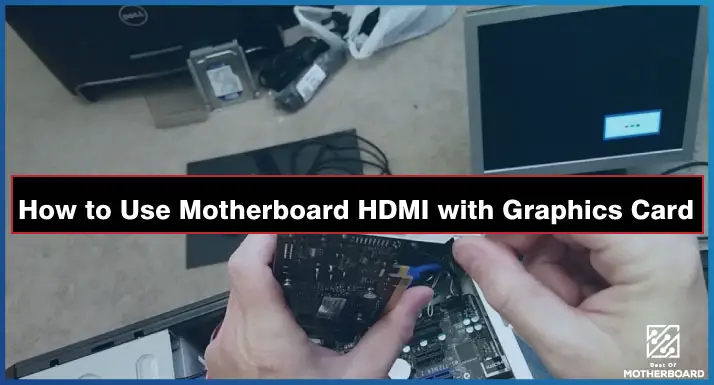Looking for how to add more SATA ports to motherboard? Adding more SATA ports to your motherboard in order to connect more storage devices is possible by installing a SATA expansion card.
With the number of devices growing rapidly, it is not uncommon that you might need to connect more than one storage device simultaneously. If you want to add more SATA ports to your motherboard but do not want to open it up and solder new pins on a controller card, getting a SATA expansion card is a great option.
If you have lots of storage drives, you probably want even more SATA ports. The thing is that the 4 to 6 SATA ports on your motherboard are not enough. But there is a solution. There are cards available that add even more SATA ports to the motherboard.
How To Add More SATA Ports To Motherboard?
It is possible to add more SATA ports to your motherboard and can be done via a port expansion card. The cards are easily available on the market and most of them are offered for cheap.
The port expansion card allows you to add ports by plugging into an available PCI-E slot which can be found on most boards today.
Be sure you know what you are doing before you jump into this though and make sure that the board has an open slot and you are looking at port expansion cards specifically made for your motherboard.
Related: Will Motherboard Post Without CPU
Types Of SATA Port Expansion Cards
Getting more SATA ports on your motherboard will allow you to connect more hard drives, SSDs and optical drives to your PC. If you are looking for faster speeds, then here is what you need to add more SATA:
- SATA Hub Port Multiplier
- SATA PCIe Cards
- SAS SATA Expansion Card
1. SATA Hub Port Multiplier (Cheap but Less Efficient)
If you are looking to add more SATA ports but have limited budget, a SATA hub port multiplier is the way to go. This device lets you turn one SATA port into multiple ports.
It is budget-friendly and one of the most common methods you want to use if you need more SATA ports for your budget build. However, just like many cheap devices, the SATA hub port multiplier has its downside in terms of performance.
Since SATA Hub port multiplier uses one of the SATA ports on the motherboard of your computer as a host, it means it will get its bandwidth from its host.
It means SATA Hub Port Multiplier performance will be low since only one SATA port will be hosting many other ports.
While SATA hub port multiplier may be cheap, they are not very efficient and produce low scores when it comes to performance and board compatibility.
Because of this, we do not recommend that you use these cards unless you are on a tight budget and/or looking to connect many, inexpensive SATA hard drives to your computer at one time.
2. SATA PCIe Card (Standard)
The SATA PCIe card has been the go-to expansion card for many. It comes in a variety of sizes and each features a number of ports depending on the size you are looking for.
The SATA PCIe cards are the go-to standard many people prefer when they need to add more SATA ports to their system. These cards can support connections in different configuration depending on how many you have.
Here is a tip: it is important that you determine how many lanes your current expansion cards and motherboard have to help you determine the port capacity of your new card.
Before purchasing a SATA PCIe expansion card, you should understand factors such as PCIe version, the PCIe lanes and throughput rate of your expansion card.
There are many functions you should consider before making a purchase. Please note that not all SATA PCIe expansion cards features no RAID controllers, which we have thoroughly explained below.
3. SAS SATA Expansion Card: The Best On The Market
The SAS SATA expansion card is the best and most efficient SATA extension method users can utilize to add more SATA ports to their computers. The SAS SATA expansion cards are made for both professionals and enterprises, you can expect them to have excellent speeds.
Expand your computer’s SATA ports by adding an SAS SATA expansion card. With these handy additions, you can enjoy the transfer of data at speeds comparable to those enjoyed by professionals and enterprises. They even offer hardware RAID controller support.
SAS SATA expansion card comes with multiple ports, which means you may need to use many cables. For example, if you buy SAS SATA expansion card with support for 8 ports, you will need 2 SAS-4 SATA cables to make it work efficiently.
Related: How to Use Motherboard HDMI with Graphics Card
Important Characteristics And Features Of SATA Expansion Card – Buying Guide
When thinking about adding more SATA ports to your motherboard, you should know that there are a few things to consider/know.
Before purchasing a SATA expansion card, it is important to note the size and type of the card, the interface of the card and whether it has cache or not. You should also check to see if there is a warranty with the hardware and if so, how long it is for.
The most important thing when deciding how to add more SATA ports to your motherboard, is understanding how you want your drives to be set up and configured before purchasing any hardware. Here are the features and characteristics to consider:
1. SATA Slot Version
When you are buying a SATA expansion card, check to ensure that the card features the latest SATA 3.0 ports because only the 3.0 port has the transfer speed of 6 Gbps or 750 MB/s.
2. Number Of Slots It Has
This is a must when you are buying a SATA expansion card. They can come with 2 to 8 slots but make sure the size and the PCIe version is taken into the account in order to get a decent bandwidth to every slot.
3. PCIe Version And Size
The PCIe connector size, PCI2 version and PCIe lanes are some of what you should look out for when purchasing your SATA expansion card. You can see these cards with x1, x4 or x8 connectors. The number after x shows the number of PCIe lanes the card will occupy.
Each lane has certain throughput rate also known as transfer speed. The rate depends on the version you buy. While a single lane on PCIe v2.0 offers throughput 500 MB/s, a single lane on V3.0 offers x2 that transfer speed (985 MB/s).
4. RAID Controller
Lastly, you need to also consider whether the card features RAID controller or not. The cards with RAID controller are usually the best and probably the most expensive because professionals and NAS builders mainly use them.
Installing A SATA Expansion Card On Your Computer
Installing a SATA expansion card is easy, but you will need aPhilips’s head screwdriver to open the case and secure the card to your computer case.
Step 1
Power off your computer and disconnect the power cord from it. Then place your hand on the metal part of the case to ensure any residual energy is discharged.
Step 2
Open the computer’s case.
Step 3
Take off the expansion slot cover panel on the back of the case.
Step 4
Install the SATA expansion card. Once it is in place, secure it and place bask the expansion slot cover panel.
Step 5
Screw back the case cover and connect the power cord. Power up the computer.
If the Windows is yet to install the driver for the expansion card automatically, you may need to install it manually.
Conclusion
That is how to Add More SATA Ports to Motherboard. Frankly speaking, there are no real disadvantages of using a PCIe expansion card to increase the number of your motherboard’s SATA ports.
However, if you are not an average user and you need to support a lot of hard drives, RAID cards might be the best option for you.

![How to Add More SATA Ports to Motherboard? [Guide] 2 How to Add More SATA Ports to Motherboard](https://bestofmotherboard.com/wp-content/uploads/2022/02/How-to-Add-More-SATA-Ports-to-Motherboard.jpg)


![How To Install Motherboard Drivers With USB? [Guide] 5 How To Install Motherboard Drivers With USB](https://bestofmotherboard.com/wp-content/uploads/2022/02/How-To-Install-Motherboard-Drivers-With-USB.jpg)
![How To Install Motherboard Drivers Without CD? [Guide] 6 How To Install Motherboard Drivers Without CD](https://bestofmotherboard.com/wp-content/uploads/2022/02/How-To-Install-Motherboard-Drivers-Without-CD.jpg)